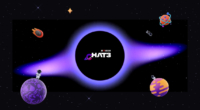Scientists have raised concerns about the growing problem of light pollution caused by LEO satellites such as Starlink. This increase in light pollution is affecting astronomers who require clear night skies for their observations. The scientists have published a Comment in the journal Nature Astronomy, urging the space industry to take note of the environmental and security issues raised by satellite constellations. They have suggested immediate actions such as reinforcing public appeals for tighter regulations on satellite launches, rigorous environmental impact assessments, and repealing regulations that impede the preservation of the global commons. If these actions are not taken, the growing number of satellites could result in the loss of the natural aspect of a pristine night sky, which is an unprecedented global threat to nature and cultural heritage. The scientists have warned that the problem will worsen if not addressed soon.
Scientists Highlight Impact of LEO Satellites on Light Pollution

A group of scientists has voiced concern over the increasing problem of light pollution caused by the growing number of low Earth orbit (LEO) satellites, including Elon Musk’s Starlink. Astronomers who rely on clear, dark night skies for their observations are among those who are affected by the growing amount of light being emitted. The scientists are calling on the space industry to take environmental and security issues seriously as part of the burgeoning space economy.
The scientists have published a Comment in the journal Nature Astronomy, highlighting the challenges that satellite constellations pose to observing the night sky. While there have been efforts to limit the brightness of satellites and to move telescopes to avoid them, these efforts only offer partial solutions to a larger problem.
The sheer number of satellites that are planned for launch means that, in the future, it may be impossible to view a clear night sky. The scientists believe that there is a global threat to both nature and cultural heritage if the problem continues to grow unchecked. They have urged the space industry to take note of the issue before it becomes worse.
The paper cites the example of Elon Musk’s SpaceX, which currently owns over 3,000 of the 5,000 active satellites in orbit. The company has plans to launch another 12,000 satellites and has proposed a further 30,000 second-generation satellites to provide global coverage. China and Russia have also expressed ambitions to dominate the satellite industry.
According to astronomers, the light pollution caused by the satellites is becoming a serious threat to observations that depend on clear, dark skies. The problem is expected to worsen if the number of satellites continues to grow.
If no action is taken, “dozens, hundreds, thousands of satellites will be seen crossing the skies at a given moment and no human being will be able to admire the night sky as it was always possible to do,” the scientists warned. The loss of a clear, dark night sky is an unprecedented global threat that will have far-reaching consequences if it is not addressed soon.
Scientists Urge Regulation of LEO Mega-Constellations
Scientists have called for action to regulate the growing number of low Earth orbit (LEO) mega-constellations, including Elon Musk’s Starlink. Astronomers have reported difficulties in capturing clear images of the sky due to the increasing light pollution caused by LEO satellites. The scientists have suggested that immediate steps should include reinforcing public appeals for tighter regulations on satellite launches, rigorous environmental impact assessments, and repealing regulations that impede the preservation of the global commons.
The scientists have urged countries to take action, particularly those who bear a larger share of responsibility in the process of the deterioration of the global night sky.
Don’t miss interesting posts on Famousbio










